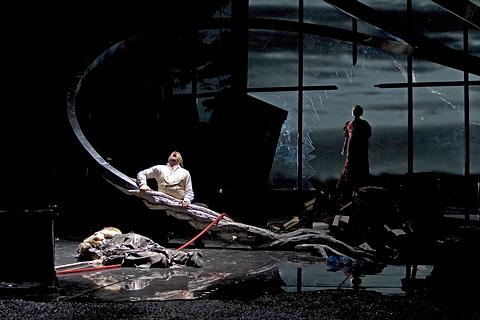|

Vital performance
'Die Walküre', appreciated by ROBERT HUGILL
When a new Ring cycle reaches Die Walküre the audience can begin to get some sort of feel for the cycle itself. The long span of the music helps us assess how conductor and lead performers are going to measure up when shaping Wagner's large paragraphs. And we are first introduced to our heroine, Brünnhilde, whose voice type and demeanour have such a big effect on the final opera of the cycle. In Die Walküre we can start to glean what philosophical basis links the director's view of the four operas; making connections between Das Rheingold and Die Walküre, guestimating how things are going to proceed. So it was with great anticipation and curiosity that I witnessed the second instalment of the Royal Opera's new Ring at London's Covent Garden on Saturday 12 March 2005.
Keith Warner's production was full of symbolism, some a helpful indication of the philosophy behind the production, some a little obscure. So before we discuss the performers, let us consider the visual symbols that Warner gives us.

Bryn Terfel as Wotan and Rosalind Plowright as Fricka in the Covent Garden production of 'Die Walküre'. © 2005 Clive Barda
|
Act 1 opens in the ruins of the black marble hall vacated by the Gods when they left for Valhalla at the end of Das Rheingold, still littered with the remains of their furniture. A catastrophic hole in the floor sprouted tree roots (from the ruins of the World Ash Tree?) which became a swirling metallic structure; a familiar form from Das Rheingold and based on scientific structures. Within this lies one of the rooms of Hunding's house (no rudimentary hut); Warner seems to be saying something about how the humans are co-habiting with the Gods. The table at which Sieglinde feeds Hunding and Siegmund is the remains of the large black marble table used by the Gods in Das Rheingold. The familiar red rope hangs from floor to ceiling, disappearing into the hole in the floor; from it is suspended a large ceiling fan -- images of ceiling fans seem to be significant in this opera. Amongst the furniture is a large chaise longue, with hugely over-sized ram's horn scrolls. This doubles as a shrine to Fricka (the ram is sacred to Fricka and her chariot is drawn by them) when Hunding makes his nightly devotions to her (a nice touch by Warner). This chaise longue will feature much in the action of the opera.
Continue >>
Copyright © 20 March 2005
Robert Hugill, London UK

|

